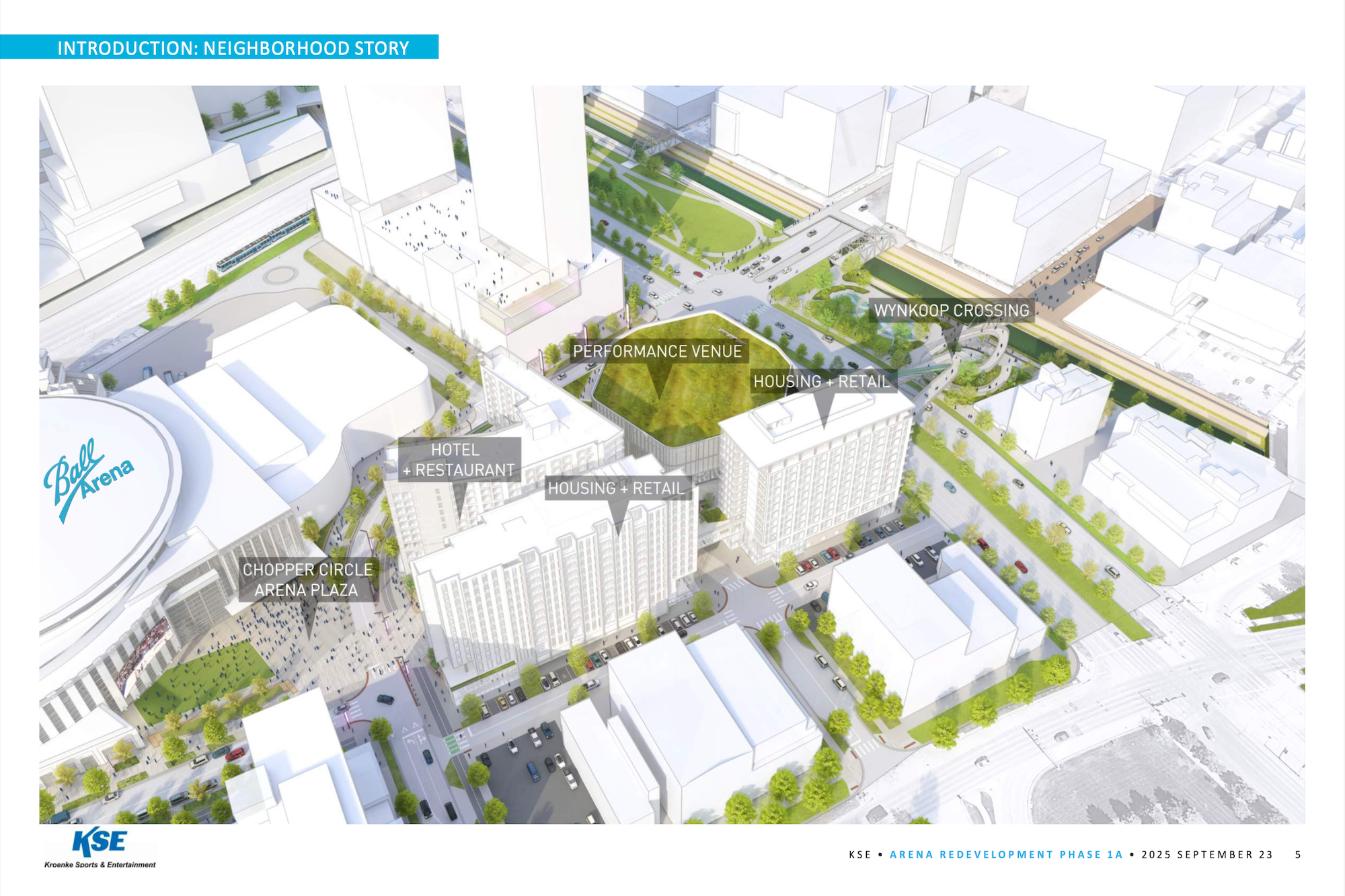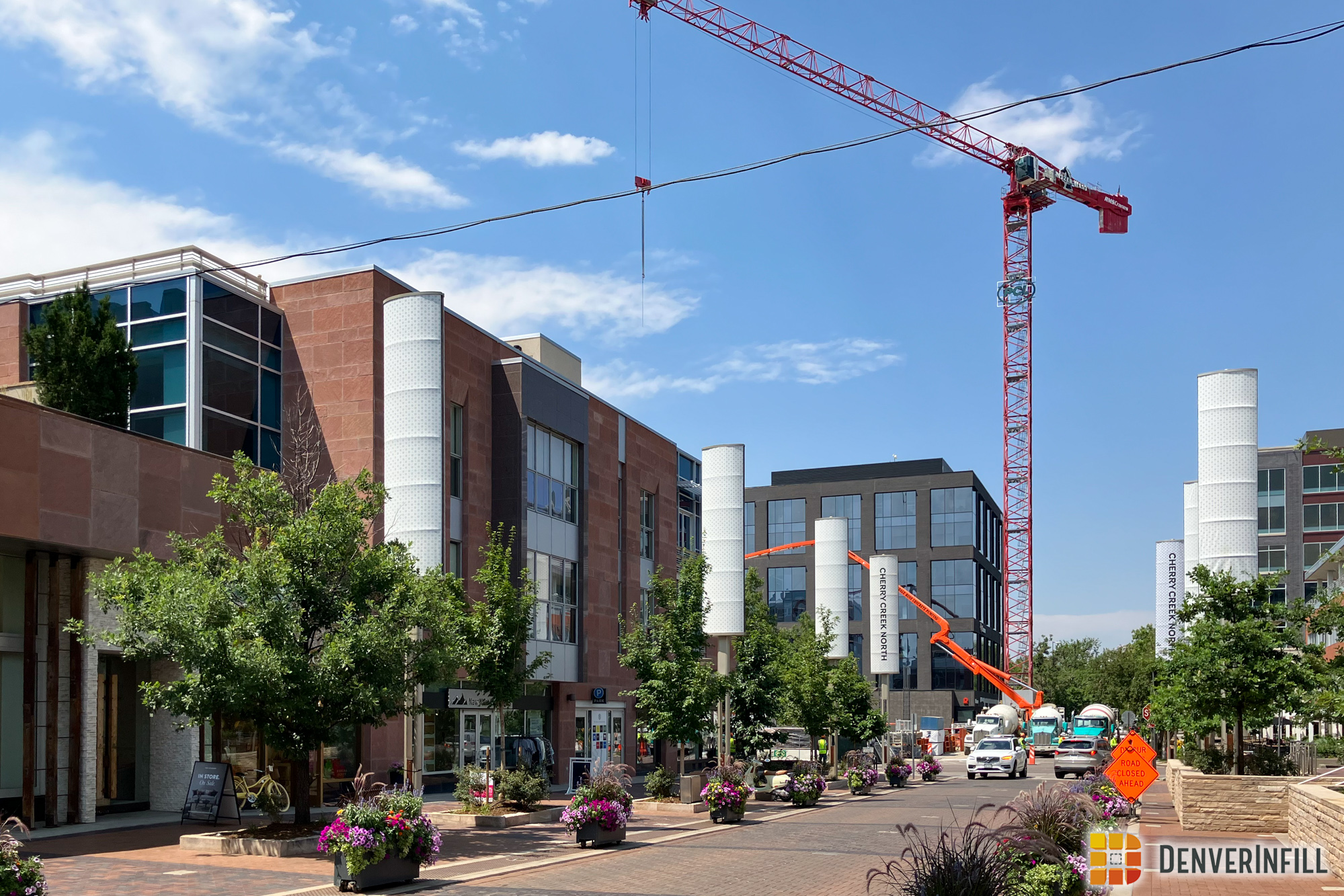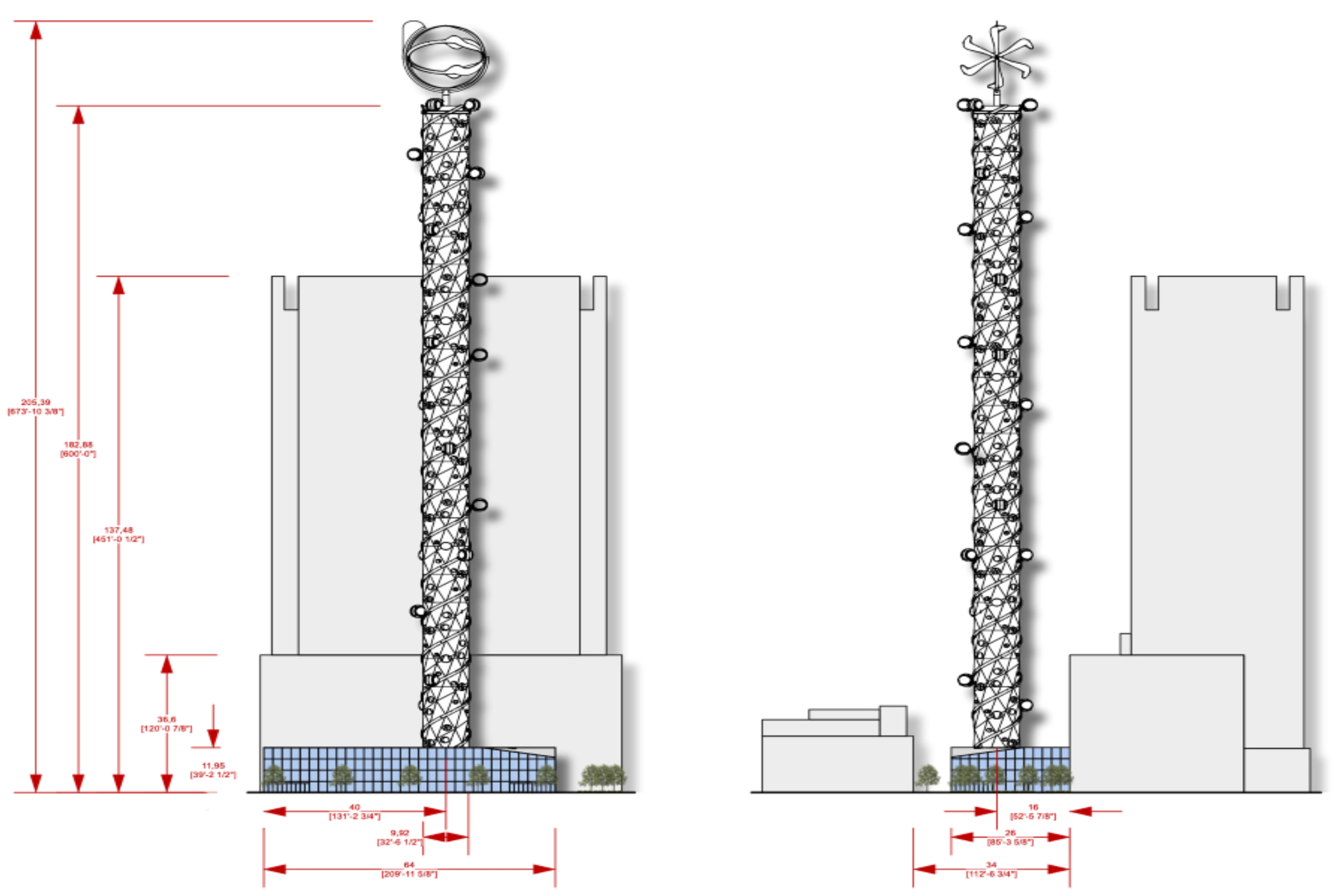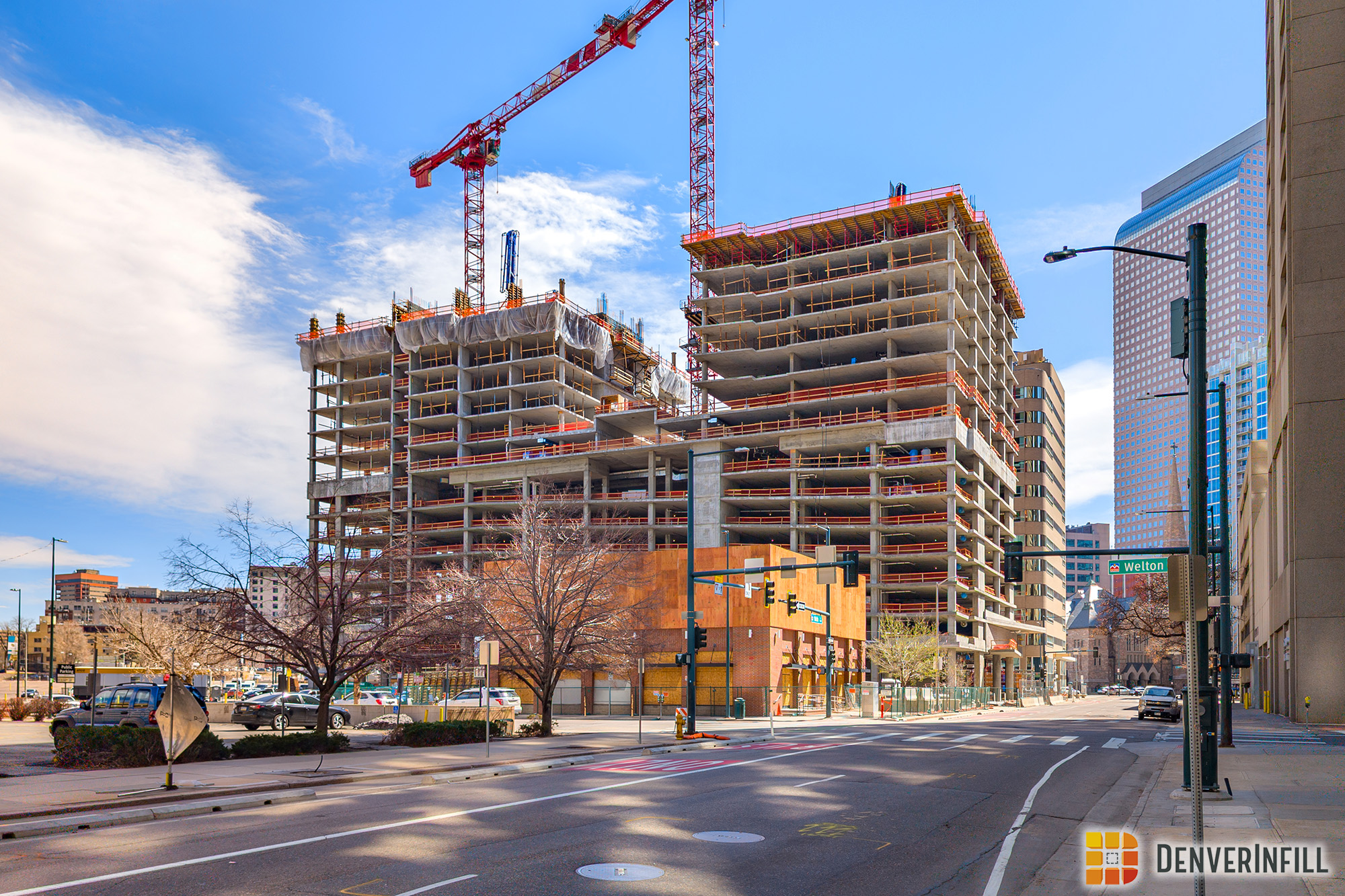A new multi-family rental project will break ground this month in central Denver’s booming Lower Highland district. The infill development, currently named 1560 Boulder Street, will be located at the corner of 16th and Boulder streets on the vacant lot across from the popular restaurants Lola and Vita. Here’s a recent Google Earth aerial view of the block:
As part of the small section of the Downtown street grid that’s located west of the South Platte River, the block’s history goes back to the city’s founding when General Larimer staked out a new town called Highland in December 1858, a few days after the founding of the towns of Denver City and Auraria, east of the river. The Town of Highland extended from the mighty Platte west to Zuni Street, the area today known as Lower Highland. In 1860, the three towns consolidated into a single municipality named Denver. Fifteen years later, in 1875, the Town of Highlands (with an “s”) was incorporated, covering the area west of Zuni Street over to Sheridan Boulevard. The Town of Highlands lasted until 1895, when it was annexed by Denver. But I digress… back to 16th & Boulder.
Given its historic roots, the site wasn’t always vacant, of course. Buildings once occupied the site in question. After searching the extensive online historic photos archive at the Denver Public Library, I found an image that gives us a good glimpse of the buildings once found along this side of the block. First, the entire photo is shown below (credit: Colorado Historical Society). The building on the right is the original Olinger Mortuary building, now home to Lola and Scarlet Salon. This photo is from the 1940s.
After a bit of zooming and cropping in Photoshop, here’s a close-up of the site. Click to embiggen:
As to when these buildings were demolished? May have been the ’70s, ’80s, or ’90s… I’m not sure. If anyone has info on this, please let me know.
Here are two views of the site today, with the one photo showing the stairs and retaining walls from the old homes still in place:
In the mid-1990s, the block (excluding the historic building at 15th & Boulder) was rezoned as a PUD (Planned Unit Development) that called for a total of six new buildings: two along 15th, one mid-block facing Central, and three along 16th Street. The first three of these buildings (two along 15th and one facing Central) were built in the late 1990s as the Overlook. In 2008, the fourth building was completed—the Highland Bridge Lofts—at the corner of 16th and Central, which features the ground-floor businesses of Living the Sweet Life and Masterpiece Delicatessen. 1560 Boulder will complete the plan for the block.
Now on to the new project…
1560 Boulder is being developed by Holland Partners Group of Vancouver, Washington, with Denver’s Sprocket as the architect. The project will consolidate the two remaining buildings in the block’s PUD into a single five-story, U-shaped building, with the open end of the “U” facing the interior of the block, as seen in this site diagram submitted to the city as part of the project’s development application:
Due to the site’s significant slope, two levels of structured parking will be mostly underground…tucked into the hillside. Ground-floor retail (with outdoor patio space) will anchor the project at the corner of 16th & Boulder. Four levels of residential apartments, a total of 130 units, will top the ground-floor uses, with a swimming pool, clubhouse, fitness center, and rooftop deck as project amenities.
The exterior design is still being refined, but here’s a preliminary rendering of the project, courtesy of Erik at Holland Partners and Matt at Sprocket Design. The building facade will be constructed of masonry, metal, and stucco:
Holland Partners is planning to break ground on the project this fall, with completion scheduled for 2013.
This exciting project completes the development of a prominent block on the edge of Downtown Denver, and will further enhance the vitality of one of Denver’s most vibrant districts.


















very nice! this design is super, just one beef – no need to waste money / space on a fitness center as there is a great gym right across the street.
regarding the old timey picture…i’ve been living nearby since the late 90s and can tell you that the two homes on the left side of the picture (zoomed version) STILL exist – they were cut off of their foundations and MOVED to 18th and Central in 1999 by the Salazar family (currently developing the Prospect Apartments)
Hey Bryan. Thanks for the info! That’s cool they’re still in the neighborhood.
It looks like the West (Denver North) parcel was scraped around the 1971 assessment and the other parcel was scraped around the 1983 assessment. I’m not sure if the homes Bryan is talking about are on this site.
I am thrilled to see this lot finally being developed. That area of the highland’s will be almost completely built out then. I am still waiting for the rest of the old standstone duplexes several blocks to the south to be renovated. That is one of my favorite blocks in Denver.
It’s super interesting to see the historic photos of a site… It gives the re/development a bit more context. I hope to see more of that in future posts…
Definitely excited to see the site being built on… just kind of frustrating to watch neighborhoods be destroyed only to be redeveloped as fixed income projects. Denver has far too much available space to be focusing so strongly on higher occupancy structures like this, in neighborhoods such as the Highlands. Either way, hooray for progress!
Wow, more rental units in the CPV, lower highlands area….everyone getting ready for the DUS completion is seems.
I agree with Rob, it’s a great idea to include historic photographs in posts about new projects. That Denver Public Library website now includes over 100,000 photographs, and they are still adding more.
Another great Library project is Creating Communities (http://creatingcommunities.denverlibrary.org/), which features a big trove of information about various neighborhoods in Denver (Auraria, Barnum, Capitol Hill, Five Points, Park Hill, University Park, and West Colfax), plus assessor records and city directories for the entire city, all digitized for online access.
For each neighborhood, the digitized materials include not only photographs but documents (for instance, a 1979 “neighborhood analysis” for the Barnum neighborhood, wallpaper samples from buildings in Auraria, a brochure from a 1970s League of Women Voters tour of northeast Denver), old maps, and interviews. All great for historical perspective. . .
I hate to be the naysayer since everyone seems so excited by this. But, is it just me, or does it seem that the design completely ignores the site slope. It really doesn’t do anything for the pedestrian experience. Other than that, the architecture of the building is pleasant and Sprocket is certainly an excellent Architect.
Maybe it’s just me, but I think the architecture looks downright dull. How many more of this style of apartments do we need in Denver? How about a little ornamentation at least? Or maybe a little variation from the stock, two-tone concrete with balconies look? So little character! So much cookie cutter!
I agree! There are too many of these buildings occuying the CPV area. To me they look like the type of mass residential projects that are now crumbling in parts of the former USSR. Bland, lacking personality, hard to distinguish from surrounding buildings and utterly uninspired.
I agree with Nick, this is the typical dull style that is popping up all over Downtown and really starting to make us seem like we have NO imagination here in Denver. Lets mix it up a bit and start to add some red brick or historical elements that might add some depth to the neighborhoods. So cookie cutter… blah
This architectural style, “generic 2000s apartment building with random surface changes and splashes of color”, is not going to age well. It’s going to look as tired as “red brick with smoked glass 80s office building” or “60s cinder block apartment building with tiny aluminum framed windows” do today. And Larry is right, considering this is along the main walking route to the pedestrian bridge into downtown, it would be nice if they gave pedestrians something nicer than a stucco wall to look at.
I work at the assessor’s office and it looks like the West (Denver North) parcel was scraped around the 1971 assessment and the other parcel was scraped around the 1983 assessment.
Others have already expressed a similar sentiment, but I find this design less than inspiring. ALWAYS happy for news on new infill projects, but become increasing unimpressed with the same (style) building being built all over the central city. Creativity goes a long way, and this just lacks in such. Pedestrian experience looks bland, to say the least.
What fascinates me most about the historic pictures is the buses! I always knew Denver had one of the most extensive tram systems in the country, but didn’t know we once had buses connect to wires! Why can’t we do this today? Seattle does this quite nicely. I imagine people would throw a fuss about overhead power lines… no?
Unfortunately, this pretty much kills the patio view from Lola that has been one of Denver’s best over the years for the highlands area dining scene. There are those of us quite frustrated this will now be obscured by this new development.
I don’t have a problem with the architectual styling, but agree that the wall, especially at the corner of 16th & Boulder, is a total miss. I get that they need to level the stie, but that corner should be steps, inviting the pedestrian up to the doors of the ground level retail they are planning to put there.
5 stories high! Will this block the (O)linger sign from confluence park? Does anyone know if there are any plans for what is now the free parking lot to the north of Lola? This plot is also zoned for 5 levels so for better or worse Lower Highlands may be becoming a little downtown.
Chris, hard to say if/how this building will block the view of different things from different sites, but certainly everyone knew these sites would be developed anyway. The parking lot across from Lola is owned by the same Olinger/Lola people. This density is great!
https://denverinfill.com/wp-content/uploads/2011/10/2011-10-04_16thBoulder_historic2.jpg
Something kind of cool about this image is that the house in the center is now located at 18th and Central, but the original house sits above a CMU base that has been built as a first floor so the original house is all 2nd floor – the patio that used to be on the downtown/east side, is now a 2nd story balcony. The same thing is true with the patio that was on the 16th street/north side, now on 18th Street as a 2nd floor balcony…
http://g.co/maps/zbrr8
The house right next door/south on Central was also a single story home, that was set onto a CMU first floor to make way for the tall condo building next door.
http://g.co/maps/wv4pf
Not sure if these will really link correctly to googlemaps, but it should? The new address is 2500 18th Street if the map does work. It’s pretty cool to see the original house changed only a bit…
Fascinating work! Great sleuthing Ken and Erin. As far as the electric buses, many were in operation by 1930, as the Denver Tramway Company began to phase out its electric street cars. These would be replaced by regular buses as well. The last street car ran on June 3, 1950.